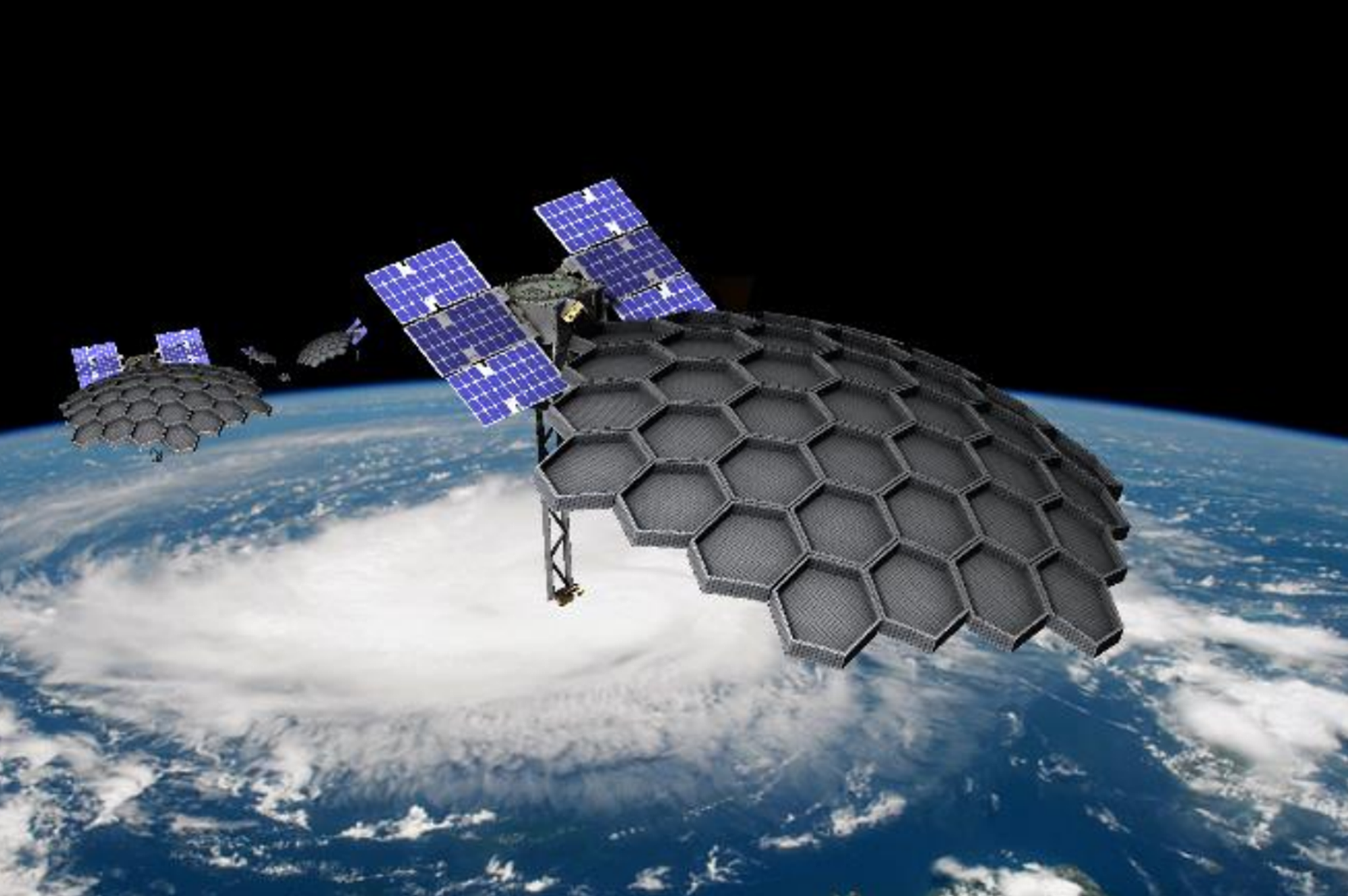Jonathan Sauder
NASA JPL
Accurate storm predictions not only save resources and money, but also lives. To build the next generation of predictive weather models, we need to measure a storm from space across time over its entire lifecycle, from water vapor to heavy precipitation. To capture the phases of a storm, measurements need to be made at multiple frequencies, with a 25km resolution. The single satellite approaches currently taken can only capture one point in time, not the storm’s lifecycle. To capture the lifecycle across time a satellite constellation of 5 satellites is required, but constellations of 10 to 100 would create greater breakthroughs. The only affordable option for constellations of this size SmallSats. While we have demonstrated we can shrink the satellite bus and associated instruments, the antenna’s diameter cannot be shrunk, as this would not provide the resolution (or ground footprint) required. To enable us to build better weather models this mission needs a broad multi-frequency (10 GHz to 600 GHz), offset-fed, deployable antenna which expands to multiple times the satellite bus size to create a small enough footprint to inform weather models. There are currently NO flight solutions for a SmallSat deployable antennas operating above 70 GHz, demanding a high risk, high reward approach be pursued. To fill this gap, we propose Starburst, an innovative new architecture for deployable structures, which not only allows this next Earth Science Mission generation mission, but may fundamentally change how we approach deployable structures in the future across many missions. Unlike traditional deployables which are constrained throughout deployment, Starburst uses an under-constrained approach to achieve high stowing efficiencies. Unlike traditional deployables which are constrained throughout deployment, Starburst uses an under-constrained approach to achieve high stowing efficiencies. Starburst can achieve highly accurate deployments (~10 micron) using kinematic mounts. It deploys to an over-expanded state via high strain composite rods, and then is pulled into position by cables, guided by the high strain rods. As the approach is under-constrained, the architecture is modular and adaptable, such that qualifying one system will qualify the architecture of a number of deployables. This one architecture can be used to deploy structure from any stowed configuration into nearly any desired shape, and can be used for apertures, booms, telescopes and solar arrays. While a clouds and precipitation Earth Science mission is the primary mission context, Starburst would usher in a new era of deployables, changing the possible for astrophysics, exploration, and even interstellar mission concepts which require deployables. Specific tasks in the proposed work include 1) Conducting a JPL A-team (architecture) study of the mission concept and additional concepts 2) developing a small-scale early prototype to demonstrate the unique under-constrained deployment architecture and 3) design of a kinematic mount to demonstrate deployment repeatability can be achieved.































